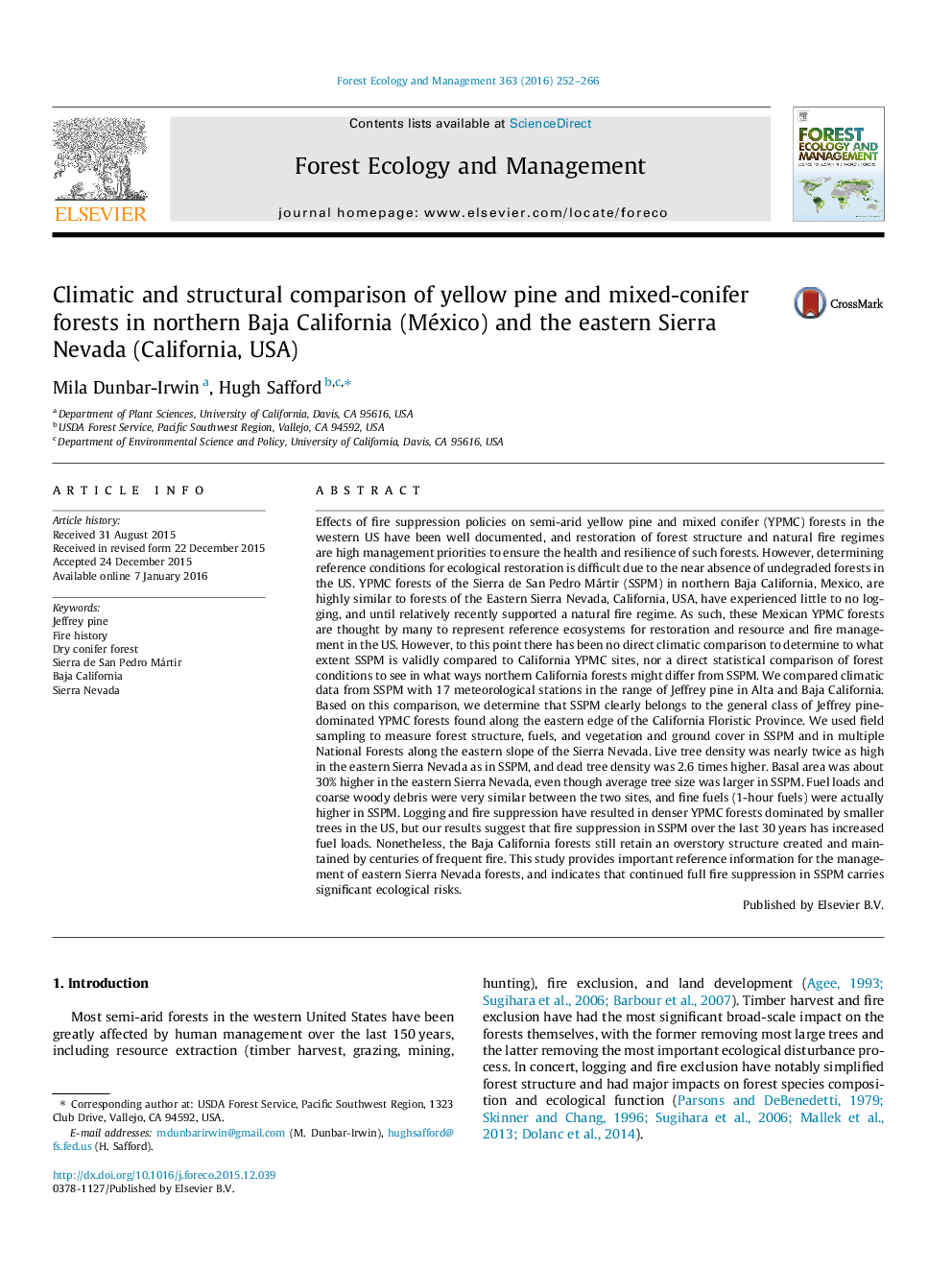| کد مقاله | کد نشریه | سال انتشار | مقاله انگلیسی | نسخه تمام متن |
|---|---|---|---|---|
| 86028 | 159157 | 2016 | 15 صفحه PDF | دانلود رایگان |

• Northern Baja California (BC) conifer forests are climatically comparable to US sites.
• US Jeffrey pine forests have been more affected by logging and fire suppression.
• BC Jeffrey pine forests support larger trees, are less dense and support less biomass.
• Overall, BC Jeffrey pine forests are valuable reference systems for US restoration.
• Fire suppression in BC is increasing forest fuels and threatens forest sustainability.
Effects of fire suppression policies on semi-arid yellow pine and mixed conifer (YPMC) forests in the western US have been well documented, and restoration of forest structure and natural fire regimes are high management priorities to ensure the health and resilience of such forests. However, determining reference conditions for ecological restoration is difficult due to the near absence of undegraded forests in the US. YPMC forests of the Sierra de San Pedro Mártir (SSPM) in northern Baja California, Mexico, are highly similar to forests of the Eastern Sierra Nevada, California, USA, have experienced little to no logging, and until relatively recently supported a natural fire regime. As such, these Mexican YPMC forests are thought by many to represent reference ecosystems for restoration and resource and fire management in the US. However, to this point there has been no direct climatic comparison to determine to what extent SSPM is validly compared to California YPMC sites, nor a direct statistical comparison of forest conditions to see in what ways northern California forests might differ from SSPM. We compared climatic data from SSPM with 17 meteorological stations in the range of Jeffrey pine in Alta and Baja California. Based on this comparison, we determine that SSPM clearly belongs to the general class of Jeffrey pine-dominated YPMC forests found along the eastern edge of the California Floristic Province. We used field sampling to measure forest structure, fuels, and vegetation and ground cover in SSPM and in multiple National Forests along the eastern slope of the Sierra Nevada. Live tree density was nearly twice as high in the eastern Sierra Nevada as in SSPM, and dead tree density was 2.6 times higher. Basal area was about 30% higher in the eastern Sierra Nevada, even though average tree size was larger in SSPM. Fuel loads and coarse woody debris were very similar between the two sites, and fine fuels (1-hour fuels) were actually higher in SSPM. Logging and fire suppression have resulted in denser YPMC forests dominated by smaller trees in the US, but our results suggest that fire suppression in SSPM over the last 30 years has increased fuel loads. Nonetheless, the Baja California forests still retain an overstory structure created and maintained by centuries of frequent fire. This study provides important reference information for the management of eastern Sierra Nevada forests, and indicates that continued full fire suppression in SSPM carries significant ecological risks.
Journal: Forest Ecology and Management - Volume 363, 1 March 2016, Pages 252–266